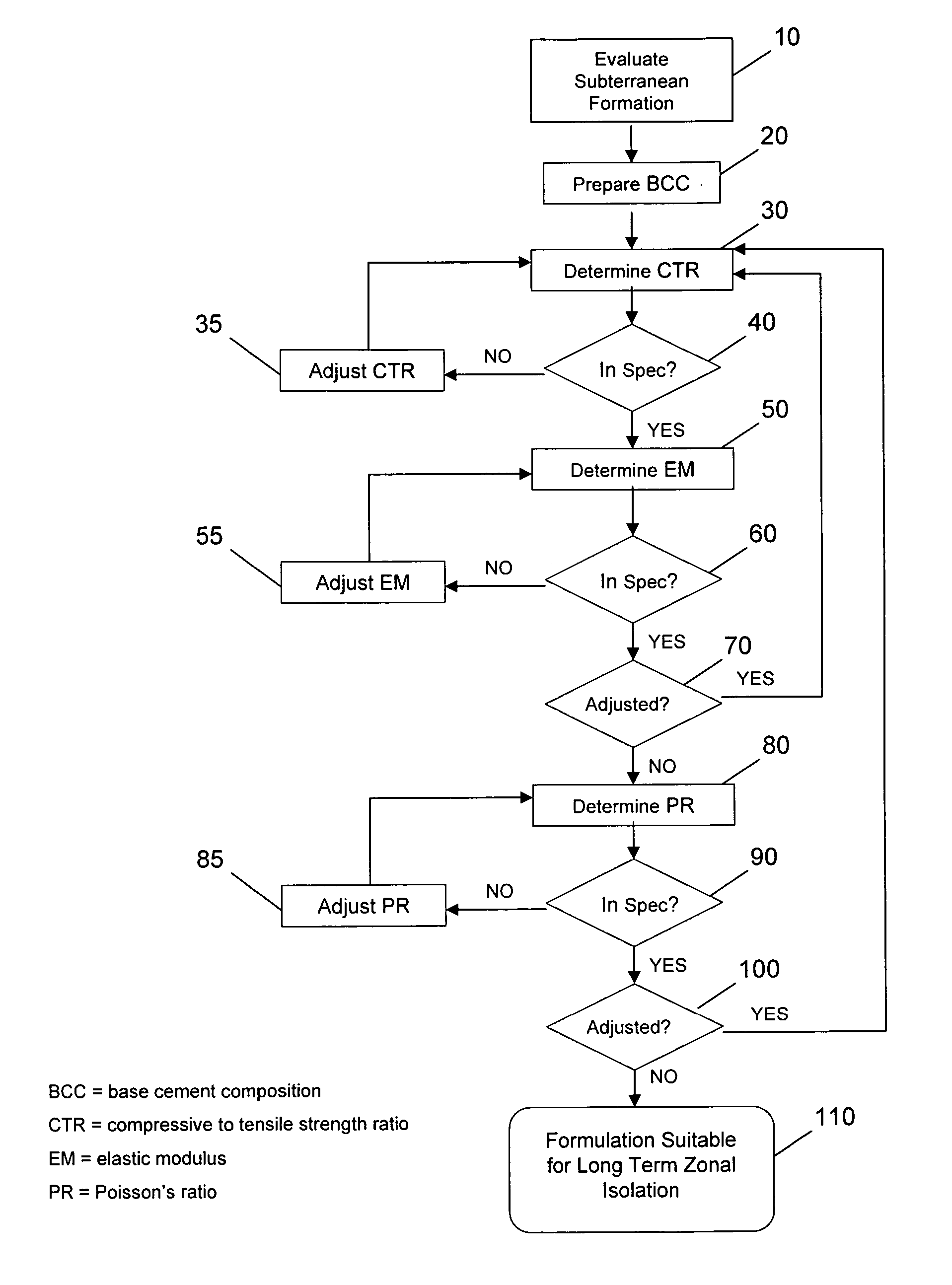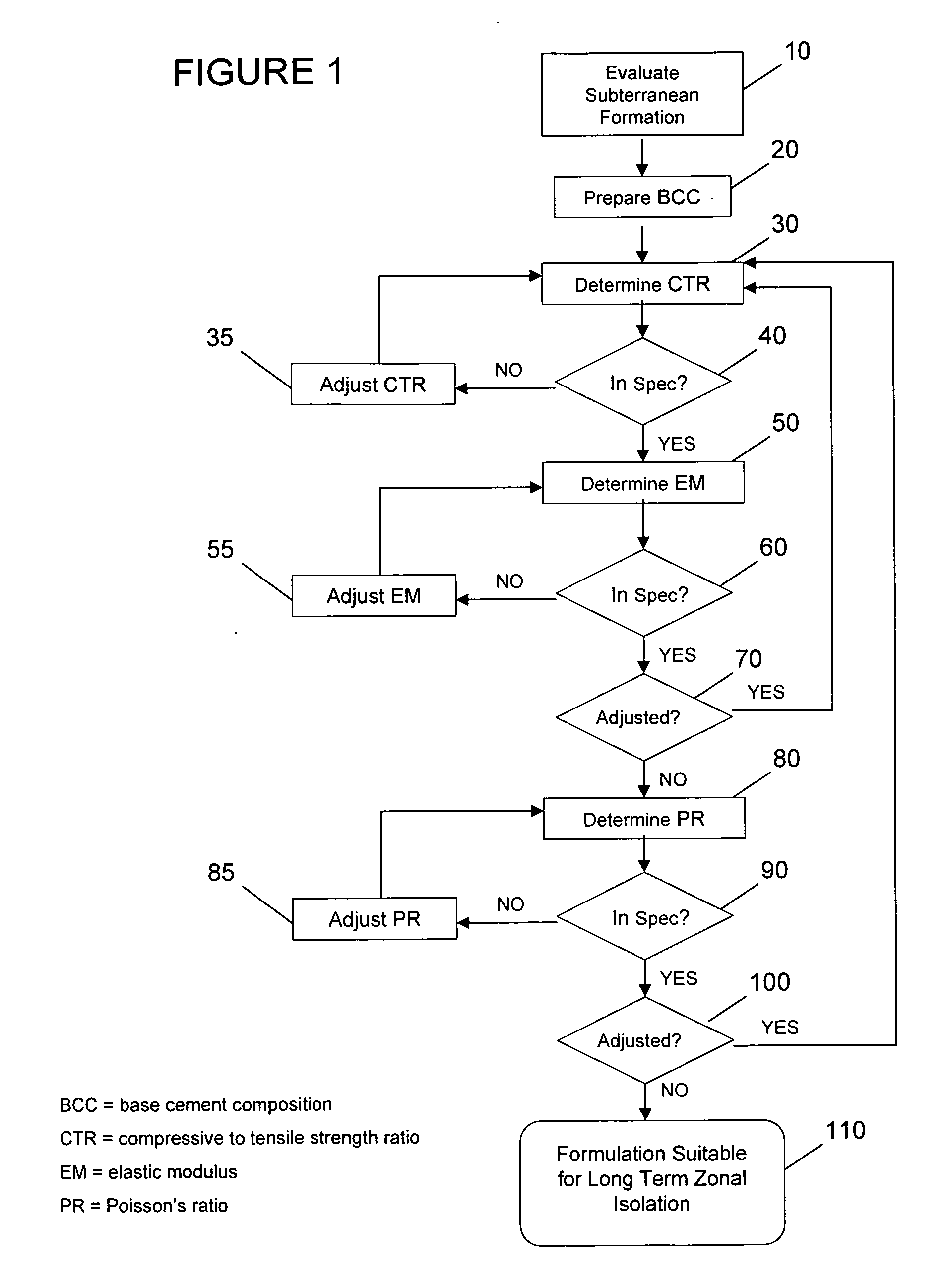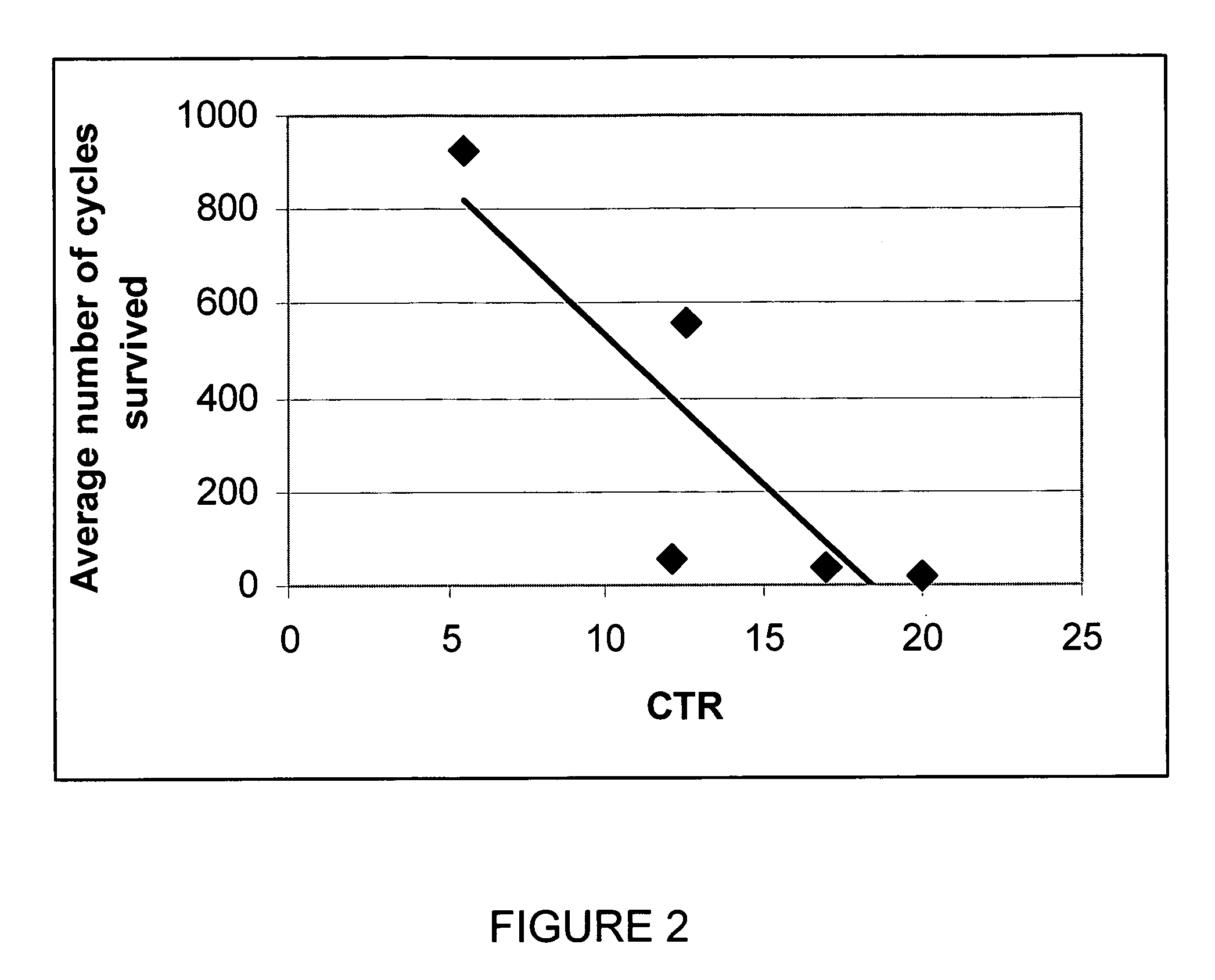Methods of formulating a cement composition
a composition and cement technology, applied in the field of well cementing, can solve the problems of detrimental cyclical stress on cement sheaths, and no unequivocal correlation between different mechanical properties
- Summary
- Abstract
- Description
- Claims
- Application Information
AI Technical Summary
Benefits of technology
Problems solved by technology
Method used
Image
Examples
example 1
[0059] Five cement slurries of compositions shown in Table 2 and density of 12.0 pounds per gallon were prepared according to API Recommended Practices 10B, Procedure 9, Twenty-Second Edition, December 1997. The slurries were poured into dog-bone briquette molds and 2″×5″ cylinder molds and cured under a pressure a 3000 psi at 190° F. for 72 hrs in an autoclave. The autoclave was cooled and slowly depressurized. The dog bone samples were tested for tensile strength using Tinius-Olsen Load Frame Instrument according to test CRD-C 260-01 in the U.S. Army Corps of Engineers' Handbook for Concrete and Cement.
[0060] An average of four values for each sample is reported in Table 3. Stress-strain tests were performed as proscribed in ASTM D 3148-02 (Standard Test Method for Elastic Moduli of Intact Rock Core Specimens in Uniaxial Compression). Compressive strengths were determined by the stress-strain method using at least 4 cylinder samples, and average value for each sample is reported ...
PUM
| Property | Measurement | Unit |
|---|---|---|
| density | aaaaa | aaaaa |
| density | aaaaa | aaaaa |
| density | aaaaa | aaaaa |
Abstract
Description
Claims
Application Information
 Login to View More
Login to View More - R&D
- Intellectual Property
- Life Sciences
- Materials
- Tech Scout
- Unparalleled Data Quality
- Higher Quality Content
- 60% Fewer Hallucinations
Browse by: Latest US Patents, China's latest patents, Technical Efficacy Thesaurus, Application Domain, Technology Topic, Popular Technical Reports.
© 2025 PatSnap. All rights reserved.Legal|Privacy policy|Modern Slavery Act Transparency Statement|Sitemap|About US| Contact US: help@patsnap.com



